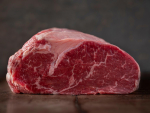At the end of January the industry-leading all-grass Canterbury unit was just $14,000 (1.5%) over budget with total farm working expenses of $935,748.
“We’ve made some reasonable savings and had a few things go over budget,” farm manager Peter Hancox told a focus day on the property late last month.
Notable among the “overs” are grazing costs for replacements and wintering.
“We reared 25 extra heifers and took them all through to December 1 and the cooler September-October meant we used a bit more meal and milk powder,” noted Hancox.
The 21% wintering cost over-run was largely due to flooding forcing an early return of cows.
Other over-runs include an extra $8608 (36%) on capital fertiliser and lime reflecting lower than expected soil test results, but nitrogen costs to date are $5712 under budget (10%), reflecting lower urea prices.
Electricity costs, excluding irrigation, are nearly $4000 or 30% over budget, Hancox blaming the new pre-milking rinse requirement.
“We’re running the machines for 30-60 minutes longer putting that pre-rinse through the machines. That’s got to have an impact.”
Irrigation expenses, including electricity and repairs and maintenance, are 16% below budget at $35,900 instead of $43,000 thanks to 18 days less operation bringing savings in power and repairs and maintenance.
Labour is 11% under budget owing to being a man down October to January, and silage making and delivery costs are a big fat zero compared to a budget of $9216.
“We haven’t made any,” Hancox noted to the field day.
However, they’ve been using plenty as the impact of reduced nitrogen rates hit home.
“Less nitrogen has meant we’ve used a lot more silage this year. It’s cost us $260/ha more to use extra silage than it would have to grow that grass with nitrogen.”
The high payout forecast means it remains “quite profitable” to continue feeding silage instead of getting rid of culls to reduce feed demand, he notes.
“That’s probably the only change we’ve made due to the higher payout this year. But we will stick to our protocols, drying off lighter cows to protect production for next season.”
As for production, cumulatively per cow it’s exactly on par with last year but back a fraction per hectare at 1351kgMS/ha as of February 18 compared to 1355kgMS/ha at the same point last year, though daily production is “about the same”.
“We peaked earlier this year but didn’t hold that peak for quite as long.”
A relatively poor January for grass growth was probably the reason, as DairyNZ’s Steve Lee, part of LUDF’s three-man management team, and DairyNZ colleague David Chapman explained to the focus day.
“Post Christmas there was a significant drop in pasture growth rate,” noted Chapman.
At about 60kgDM/ha/day the lack of growth was causing consternation among the management team as to why, but Chapman explained modelling of pasture growth using the past 30 years climate data for Lincoln shows January, on average, has growth like that every third or fourth year.
“So that 60kg/ha/day in January is nothing unusual. It is well within the range of variation.”
The modelling suggests one in four years will average over 100kgDM/ha/day in January, and one in four below 55kgDM/ha/day. One in ten years the model suggested growth could plummet to about 35kgDM/ha/day, even with irrigation.
Chapman says cool temperatures were probably the main factor this year, averaging 15-16oC compared to the 18-20oC which is the optimum for ryegrass.
While spring temperatures are typically lower and growth greater, the plant is in a different growth phase then, with tillers “going reproductive” and drawing on reserves to produce a flush of growth regardless of temperature.
By January plants are trying to replace tillers so overall growth is lower.
“Nitrogen response could also have been an issue. Tiller replacement is affected by nitrogen availability so if it was restricted there could have been some influence,” added Chapman.
Lee echoed Chapman’s comments, suggesting a soil thermometer is “a jolly good investment” to help track and predict pasture growth on any farm.
“They’re so cheap to run and you can get ones that will feed the information right to your computer if you want to.”
He also pointed out the farm has cut its nitrogen fertiliser budget from 350kgN/ha to 260kgN/ha for the season.
“We’ve used about 70% of the nitrogen we have in previous seasons up to this point.”
That’s been achieved by applying 25kgN/ha in most applications, instead of 40kgN/ha.
Research on LUDF is looking at whether better targeting of nitrogen fertiliser might improve response rates with 0, 12.5kgN/ha, 25kgN/ha, 37.5kgN/ha and 50kgN/ha applied on three trial areas of one paddock, as AgResearch’s Samuel Dennison explained.
“Overall they’ve all responded pretty well up to 25kgN/ha. Above that the response is variable. I wouldn’t [bet] on making more money by putting more than 25kgN/ha on.”
Consequently, he says LUDF’s change to 25kgN/ha applications is unlikely to have compromised growth this season, but in a warmer year it might.
Whether more, or less nitrogen should be applied to areas of good and poor growth respectively is still being assessed. “That’s the $64m question,” commented Lee.
Questioned on why the farm was feeding silage costing 39c/kgDM rather than using more nitrogen to grow grass at about 13c/kgDM, Lee said that is “something we have to think hard about.”
South Island Dairy Development Centre executive director Ron Pellow implied nutrient management model Overseer and the focus on nitrate loss from dairying is the reason.
“The way Overseer models nitrogen fertiliser versus bought in feed makes bought in feed look more favourable…. What it doesn’t address is at the catchment level, what nitrogen is being lost in growing that feed.”
Dennison added that Canterbury’s Land and Water Regional Plan, which effectively caps farms’ nitrogen losses at their 2009-2013 level, a farm’s “baseline” in Environment Canterbury’s terms – means nitrogen is “no longer just about economic drivers”.
That became abundantly clear later at the focus day as Envrionment Canterbury principal strategy advisor Ian Brown spelt out the detail of plan which is now subject only to appeals on points of law. “To all intents and purposes for farming this affects you now,” he stressed.
All farms over 5ha have to establish a “baseline” for nitrogen loss which is the average loss 2009-2103 as calculated by Overseer using nationally accepted protocols for input data.
“It’s really important when you’re establishing your baselines you look at them with a common set of protocols.”
Brown called for “openness and transparency” in the way baselines are calculated. Conversions with consents granted up to May 2013 will have their baselines calculated as if the farm had been dairying 2009-2013.
He stressed the need to have four years records of inputs with which to calculate that baseline, and to use those same records every time Overseer is updated.
“These baselines are really important in your day to day decisions. They are going to impact what you can and can’t do.”
For those with nitrogen loss baselines above 20kgN/ha/year – in practice nearly all dairy farms, and in an area designated a red or orange zone for nutrient allocation by Environment Canterbury – nearly all of Canterbury except the high country – a consent for that nitrogen loss must be obtained by 2016 in orange zones or 2017 in red zones.
“If you leach over 20kgN/ha by 2016 or 2017 you need to get a consent to farm,” Brown said.
Besides baseline data, a farm environment plan (FEP) must be submitted to gain a consent.
“I see the FEP as one of the key tools to management of farming within [nutrient loss] limits…. The future is going to be in FEPs. The sooner you start looking at those the better because there’s going to be a benefit in those.”
Brown warned that if farmers treat the FEP, as set out in Schedule 7 of ECan’s LWRP, as a “tick box exercise” they would miss opportunities to identify areas to improve management, for example, with irrigation.
















